Vietnam is an incredibly diverse country, with as many as 54 distinct ethnic groups being recognized by the Vietnamese government. These groups range in size from the tens of millions to only a few hundred, and it can often be confusing to travellers at first which groups live where and at what places one can discover and learn about the smaller groups in particular.
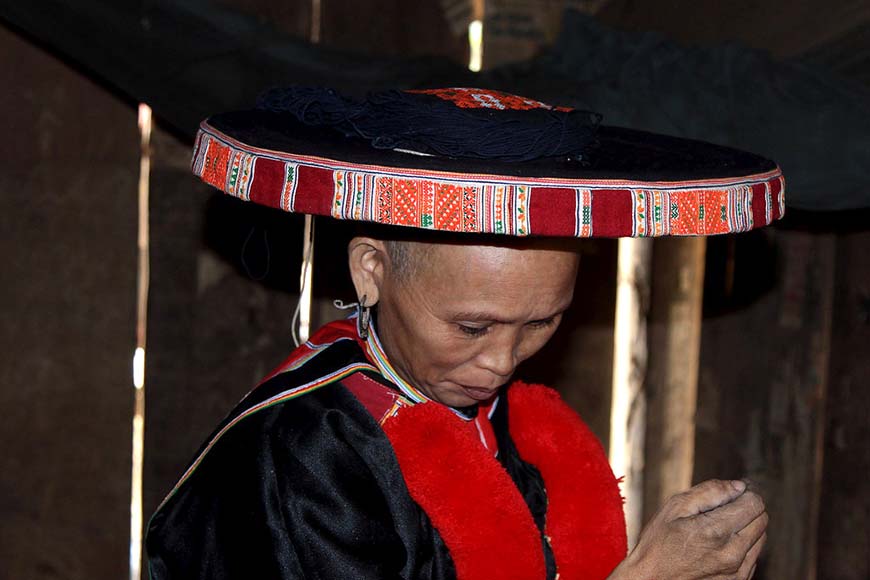
Traditional dress of a Red Dao woman
While the larger groups such as the Tay, Nung, and H’mong can be found all over the Northern part of Vietnam, there are tens of groups here that live in remote and specific areas that are easily missed when travelling through this amazing land.

Flower Hmong women
For this article, we have ed three of the most unique and fascinating minorities that while technically aren’t the smallest in the country, all number in the few hundreds or few thousands. These groups are the Pu Peo, Pa Then and Lo Lo, all native to Northern Vietnam, especially Ha Giang Province, Vietnam’s “final frontier” where the vast majority of the population is made up of ethnic minorities of all kinds. They are the most concentrated in Pho La commune, right at the border with China.
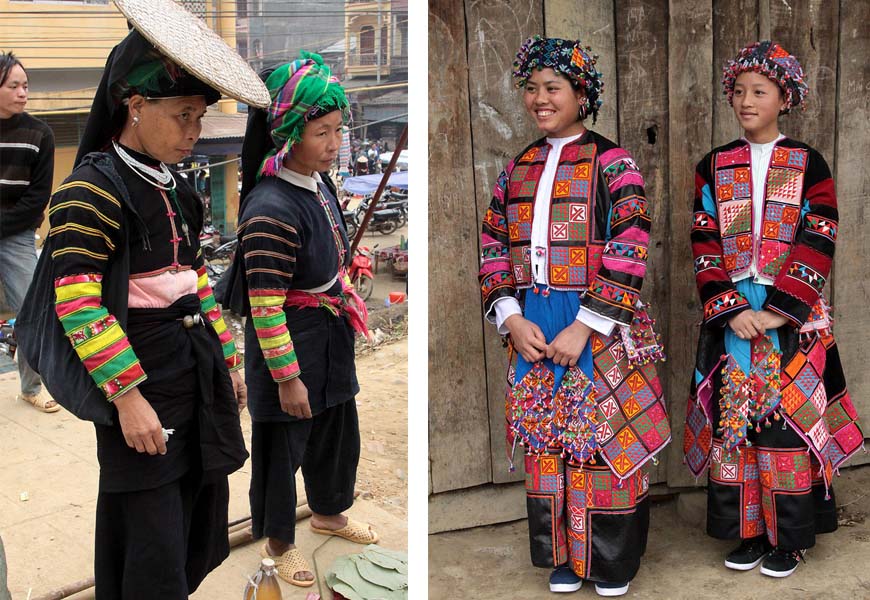
Lo Lo girls in Meo Vac.
First up, the Pu Peo is the smallest of the three groups, with their numbers as low as 687 in the 2009 census, though another small group also resides in Southern China. The Pu Peo people live entirely within
Dong Van district of Ha Giang province, and visitors to their villages can enjoy the welcoming atmosphere and the amazing traditional clothing worn by the women, consisting of an ankle length skirt and two intricate vests made of several panels and adorned with coloured cloth. Learning about the Pu Peo religion and mythology is equally fascinating, as they worship four gods: The Principal God, The Sky God, The Land God and The Tree God. This special importance placed on trees is reflected further in their culture, as all Pu Peo swear an oath to preserve and protect the sacred forest.
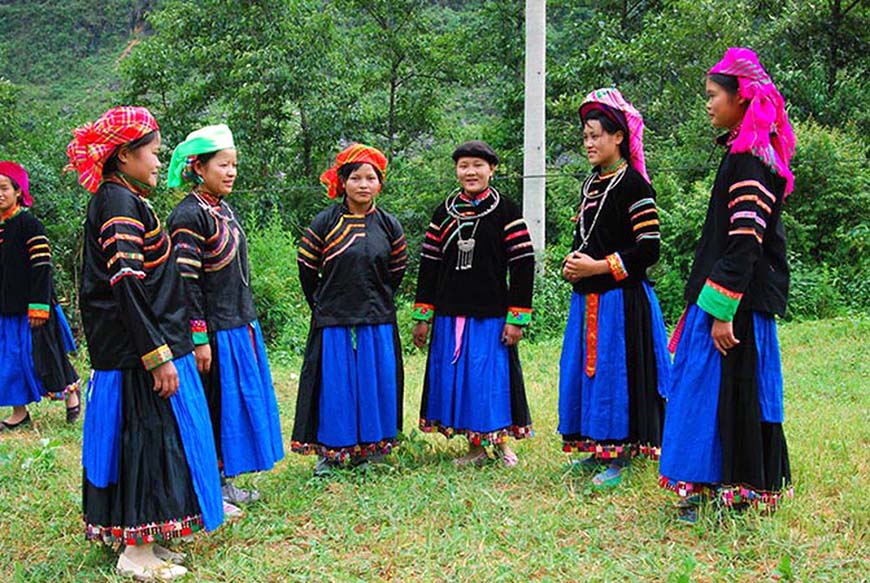
Pu Peo tribal woman
In addition to the four gods, the Pu Peo believe in various spirits and souls, and maintain that a person has eight souls and nine spirits, together controlling the person’s actions and existence. In Pu Peo homes you will find a small altar with three sandstone jars placed upon it to represent the three previous generations of ancestors.

Pa Then woman
Also in Ha Giang, but this time in the district of Quang Binh, is where you’ll find the Pa Then. Numbering 6811 people in the 2009 census, they are not as small as the Pu Peo but still is one of thee smaller ethnic groups of the country. They are most concentrated in the village of My Bac, on the road between Yen Binh and Viet Quang.
Prior to 1970, they primarily practiced “slash-and-burn” agriculture, a process where a field is cleared of vegetation, which is then burned to provide nutrients for the soil. After a few years of this in any given field, the nutrients are depleted and the farmers move on to a different field. However, in 1970 wet rice cultivation was introduced to the Pa Then, which has now entirely replaced the old form of farming. Animal husbandry is also prevalent, with the Pa Then raising many different kinds of animals, including water buffalo, goats and pigs.
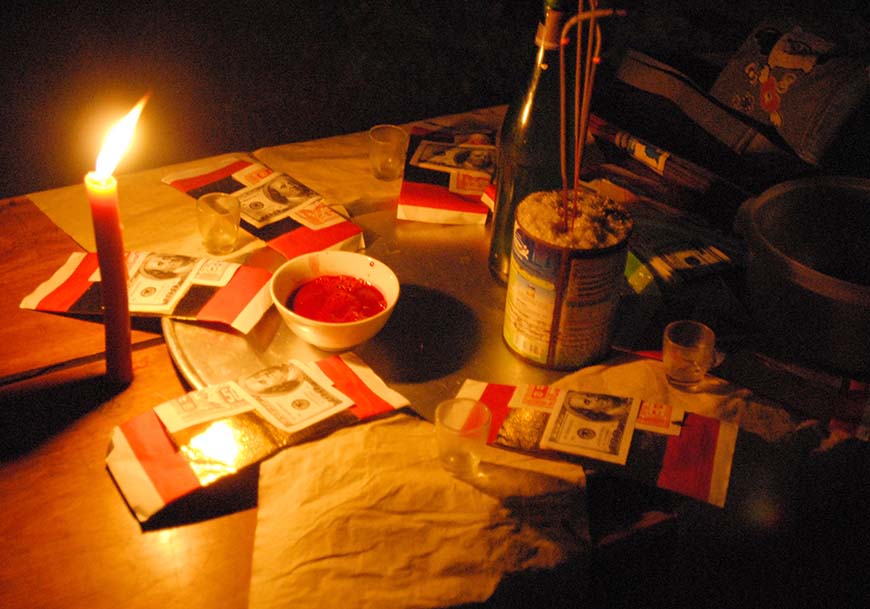
The offerings to worship gods and ancestors
In terms of mythology, the Pa Then divide the universe into four parts: Sky, earth, water and the underworld. They also believe in both benevolent and malevolent spirits and ghosts, with the four primary spirits of a house being the stove god, the room god, the kitchen god and the village god.
The Pa Then also practice ancestor worship, like many other ethnic groups in the region, and malevolent spirits are often deceased people who died unnatural deaths, while ancestors who lived happy and long lives will watch over their descendants. If you are lucky enough to visit this village between mid October and the lunar new year (usually around February) you can witness the unique fire dancing festival that the Pa Then are renowned for across Vietnam.
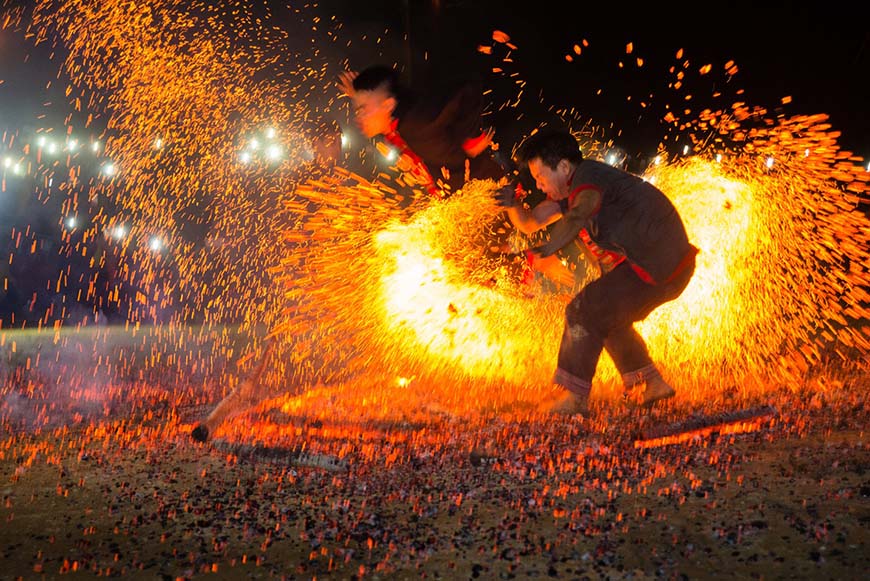
Unique Fire Dance Festival of Pa Then minority people
Finally the Lo Lo are considered among the most unique of Vietnam’s ethnic minorities, numbering only about 3400 in the provinces of Ha Giang, Lao Cai and Cao Bang. Their uniqueness comes from the fact that their closest relatives, the Yi, live across the border in China, rather in Vietnam, making the Lo Lo very distinct from other minorities within Vietnam. The name Lo Lo stems from their reverence of the tiger, as “Lo” in their language translates to “Tiger”. While the Lo Lo are spread across three provinces, they are most concentrated in Lo Lo Village near the extreme northerly point of Vietnam; Lung Cu.
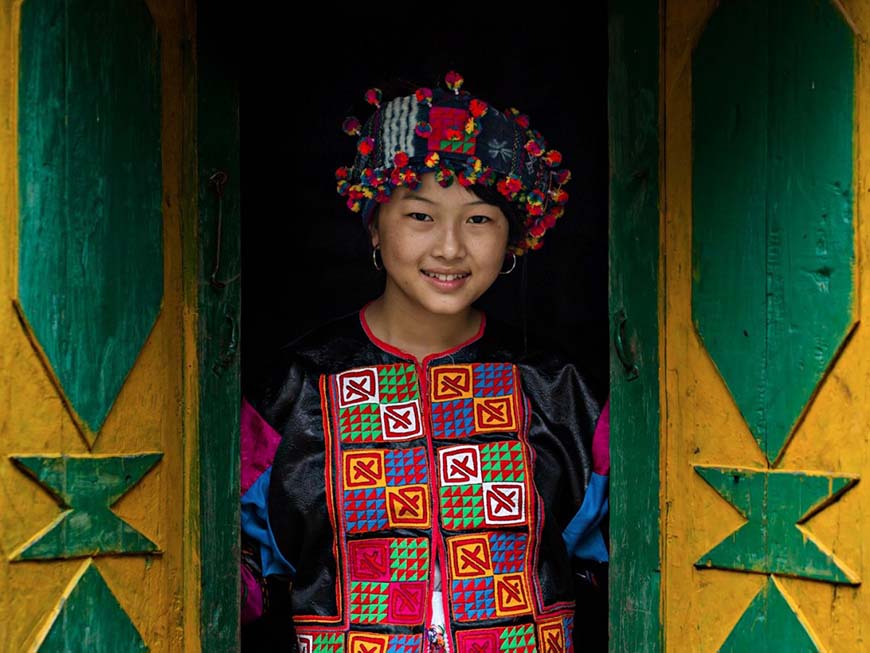
Flower Lo Lo girls
The village consists of 20 to 30 houses built on stilts, on the ground or with a combination of both techniques. Agriculture is the dominant economic activity, and if you’re lucky to be in the village at the time of a wedding, you’ll get to see that this is considered a great event by the Lo Lo, as weddings are often incredibly extravagant, despite their remote and isolated location. The Lo Lo are best known for their drum music, with gia